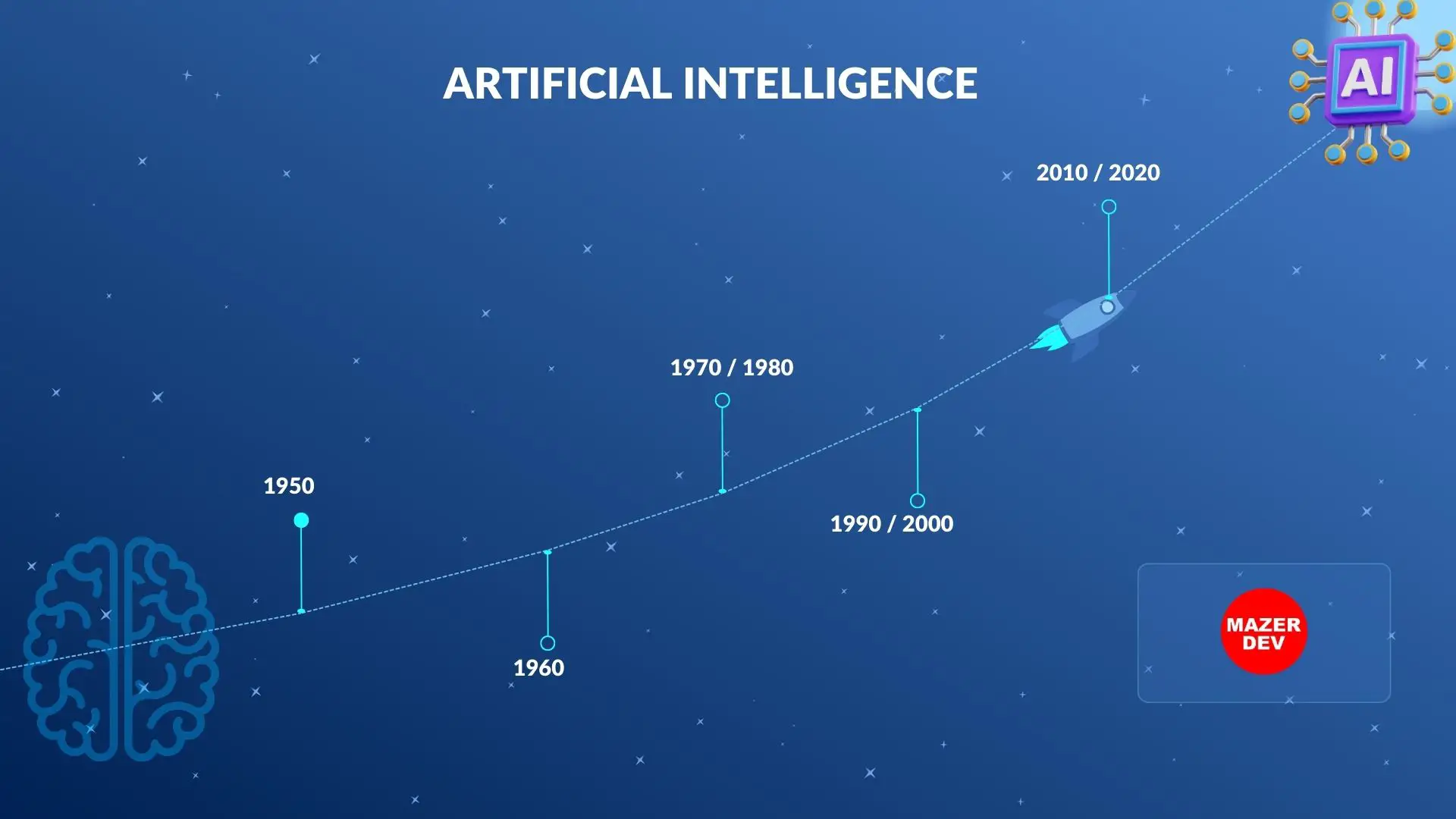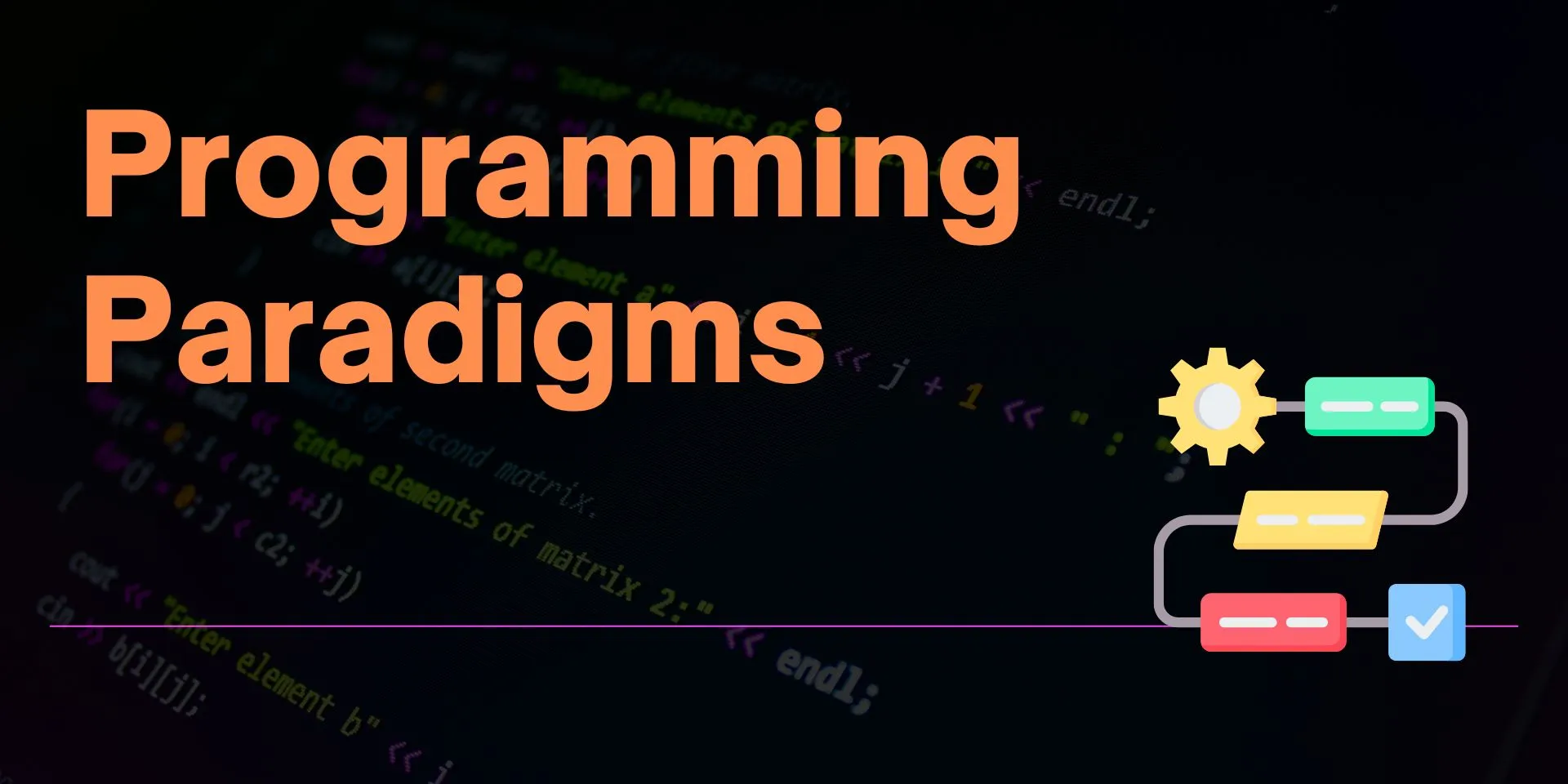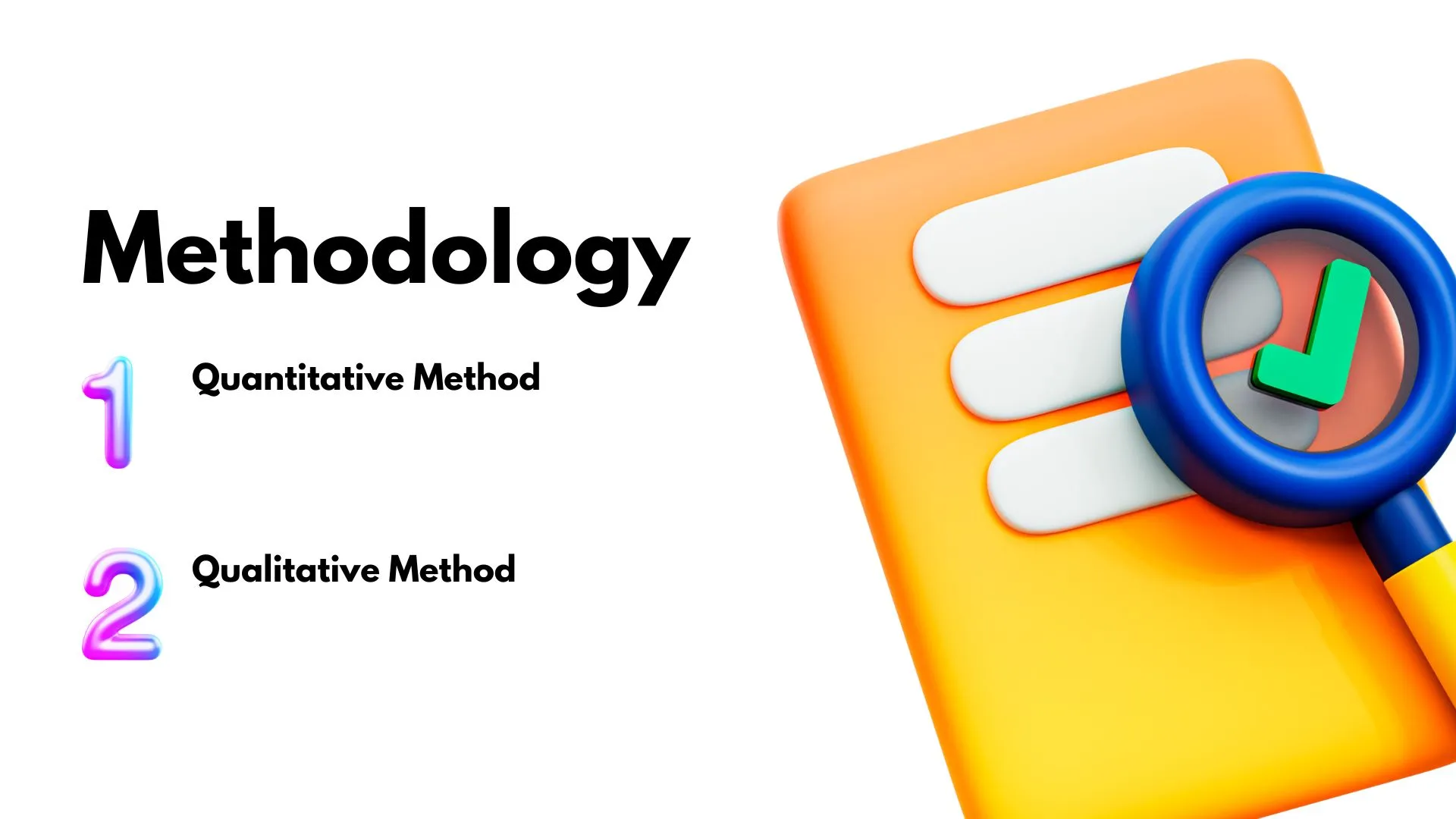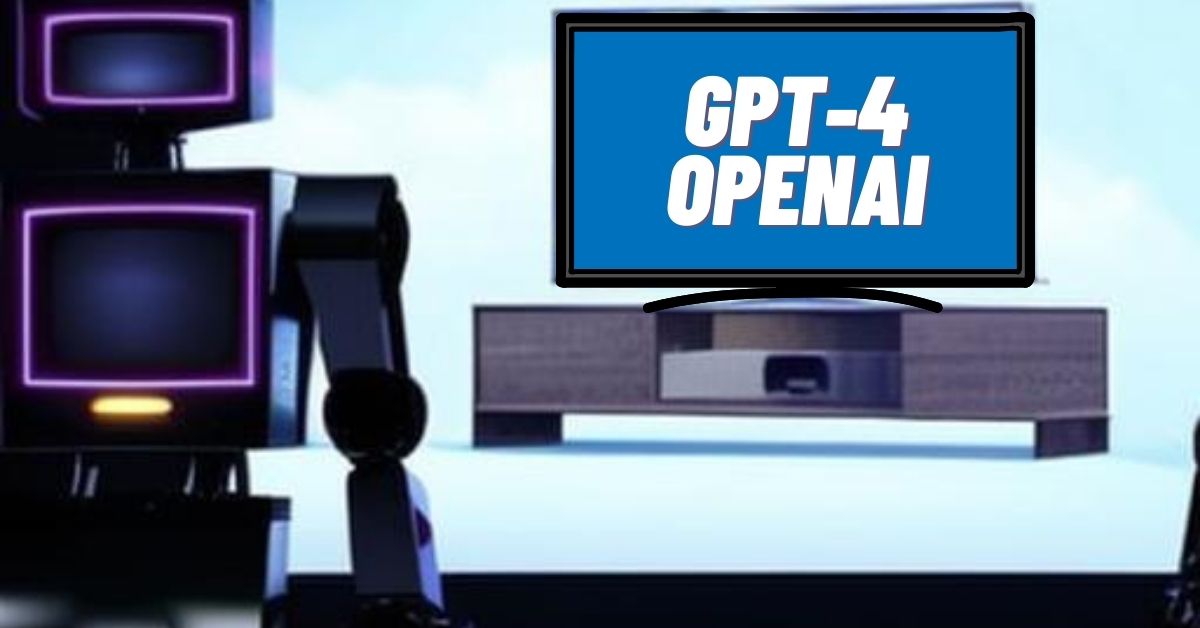This is a detailed timeline of the history of Artificial Intelligence (AI), highlighting significant events, breakthroughs, and developments from its early beginnings:
1943: Warren McCulloch and Walter Pitts develop the first mathematical model of an artificial neuron, laying the foundation for neural networks.
1950: Alan Turing proposes the Turing Test, a method for determining if a machine exhibits intelligent behavior indistinguishable from that of a human.
1956: John McCarthy, Marvin Minsky, Nathaniel Rochester, and Claude Shannon organize the Dartmouth Conference, marking the birth of AI as a field of study.
1956: IBM researcher Arthur Samuel develops a checkers-playing program, which is among the first AI programs and a pioneering effort in machine learning. The program learns to improve its gameplay by playing against itself and refining its strategy over time.
1956-1974: The early enthusiasm for AI research leads to significant developments, including McCarthy’s Lisp programming language, Rosenblatt’s Perceptron, and Newell and Simon’s General Problem Solver.
1964: Danny Bobrow’s STUDENT program demonstrates the ability to solve algebra word problems, showcasing early natural language understanding capabilities in AI.
1965: Joseph Weizenbaum develops ELIZA, a chatbot that simulates a Rogerian psychotherapist, illustrating the potential for AI in natural language processing.
1969: Marvin Minsky and Seymour Papert publish “Perceptrons,” raising doubts about the capabilities of neural networks and shifting research focus towards symbolic AI and expert systems.
1972: The PROLOG programming language is developed by Alain Colmerauer and Philippe Roussel, becoming a popular choice for AI applications in logic programming and knowledge representation.
1974-1980: AI research faces a period of reduced funding and skepticism known as the “AI Winter,” as the limitations of early AI systems become apparent.
1980s: Expert systems, such as MYCIN and XCON, gain prominence during this period, demonstrating the potential for AI in specialized knowledge domains.
1986: The backpropagation algorithm, developed by Geoffrey Hinton, David Rumelhart, and Ronald Williams, revitalizes interest in neural networks by enabling more effective training of multi-layer perceptrons.
1990s: Machine learning and statistical methods gain popularity in AI research, with the development of algorithms like Support Vector Machines and decision trees.
1990: Rodney Brooks introduces the concept of behavior-based robotics, promoting a bottom-up approach to AI and robotics that emphasizes the importance of interaction with the environment.
1992: Gerald Tesauro develops TD-Gammon, a backgammon-playing program that uses reinforcement learning and neural networks to achieve expert-level play, demonstrating the potential of these techniques for learning from experience.
1995: Richard Wallace creates the chatbot A.L.I.C.E (Artificial Linguistic Internet Computer Entity), based on the earlier ELIZA program, showcasing advancements in natural language processing and conversational AI.
1997: IBM’s Deep Blue defeats world chess champion Garry Kasparov, marking a milestone in AI’s ability to master complex strategic games.
1997: The first version of the RoboCup, an international robotics competition focused on soccer-playing robots, takes place in Japan, promoting research in AI, robotics, and multi-agent systems.
1999: Yann LeCun and his collaborators introduce the LeNet-5 convolutional neural network (CNN) for handwriting recognition, paving the way for future advances in deep learning and computer vision.
2000: The Rapid development of the World Wide Web during this period fuels research in AI topics such as information retrieval, web mining, and semantic web technologies.
2001: The first version of the Automatic Speech Recognition in Adverse Conditions (AURORA) project is launched to improve speech recognition technology in challenging environments, leading to significant advancements in this area.
2004: The first DARPA Grand Challenge, a competition for autonomous vehicles, takes place, spurring research and development in self-driving cars and robotics.
2004: IBM introduces the IBM WebFountain, a large-scale text analytics and data mining platform that utilizes AI techniques such as natural language processing and machine learning to analyze vast amounts of unstructured data on the web.
2005: Sebastian Thrun, Michael Montemerlo, and their team at Stanford University win the second DARPA Grand Challenge with their robotic vehicle Stanley, showcasing advances in autonomous navigation and sensor fusion.
2006: Geoffrey Hinton and his collaborators coin the term “deep learning” and introduce techniques for training deep neural networks, setting the stage for a resurgence in neural network research.
2007: Fei-Fei Li, Kai Li, and Li-Jia Li launch the ImageNet dataset, a large-scale visual database that becomes a crucial resource for benchmarking and driving progress in computer vision and deep learning.
2009: The first version of the Kinect, a motion-sensing device developed by Microsoft for the Xbox gaming console, is released, demonstrating advances in real-time human pose estimation and gesture recognition.
2010s: The rise of big data, increased computational power, and advances in deep learning algorithms lead to significant breakthroughs in AI, particularly in areas like computer vision, speech recognition, and natural language processing.
2011: IBM’s Watson AI system wins the Jeopardy! game show against human champions, showcasing its prowess in natural language understanding, knowledge retrieval, and machine learning. This success highlights the potential of AI in a wide range of applications, including healthcare, finance, and customer service.
2012: Alex Krizhevsky, Ilya Sutskever, and Geoffrey Hinton achieve state-of-the-art results on the ImageNet challenge using a deep convolutional neural network (CNN), fueling interest in deep learning for computer vision tasks.
2013: DeepMind, a leading AI research company founded by Demis Hassabis, Shane Legg, and Mustafa Suleyman, introduces the DQN algorithm, which combines deep learning and reinforcement learning to achieve human-level performance on Atari games.
2014: Google acquires DeepMind, a leading AI research company that later develops the AlphaGo program, which defeats the world champion Go player in 2016.
2014: IBM launches the Watson Developer Cloud, a set of APIs and services that enable developers to build AI-powered applications using IBM’s Watson technology. This initiative brings AI capabilities to a broader range of industries and applications.
2014: Ian Goodfellow and his collaborators introduce Generative Adversarial Networks (GANs), a novel deep learning framework for generating realistic images, which has since been applied to various domains such as art, design, and data augmentation.
2015: Microsoft releases the first version of the Microsoft Cognitive Toolkit (previously known as CNTK), an open-source deep learning framework that facilitates the development of AI models across various platforms.
2016: Google DeepMind’s AlphaGo defeats world Go champion Lee Sedol in a five-game match, demonstrating significant advancements in AI’s ability to master complex strategy games.
2016: IBM introduces Project Debater, an AI system that can engage in live debates with humans by analyzing massive amounts of text data, formulating arguments, and presenting them in a coherent manner. This project showcases advancements in AI’s natural language understanding and reasoning capabilities.
2017: Researchers at Facebook AI Research (FAIR) develop the “Detectron” object detection framework, which becomes a widely used tool for tasks such as object detection, semantic segmentation, and human pose estimation.
2018: OpenAI’s GPT-2 language model demonstrates impressive capabilities in generating coherent and contextually relevant text, highlighting the potential for large-scale language models in AI.
2019: The Allen Institute for AI releases the AllenNLP library, an open-source platform for natural language processing research, which provides pre-trained models, tools, and datasets for various NLP tasks.
2019: IBM releases the AI Fairness 360 toolkit, an open-source library designed to help developers and researchers detect and mitigate bias in AI models. This toolkit addresses the growing concern about fairness and transparency in AI systems.
2020: OpenAI releases GPT-3, an even more powerful language model, showcasing its ability to perform a wide range of natural language processing tasks with minimal task-specific training.
2020: IBM announces its commitment to advancing trustworthy AI by focusing on transparency, fairness, robustness, and explainability in AI development. This commitment includes the release of the AI Explainability 360 toolkit, an open-source library that provides tools to interpret and explain AI model decisions.
2021: Google DeepMind’s AlphaFold 2 achieves breakthrough results in predicting protein structure, solving a long-standing challenge in molecular biology and opening up new avenues for drug discovery and biotechnology applications.






Comments